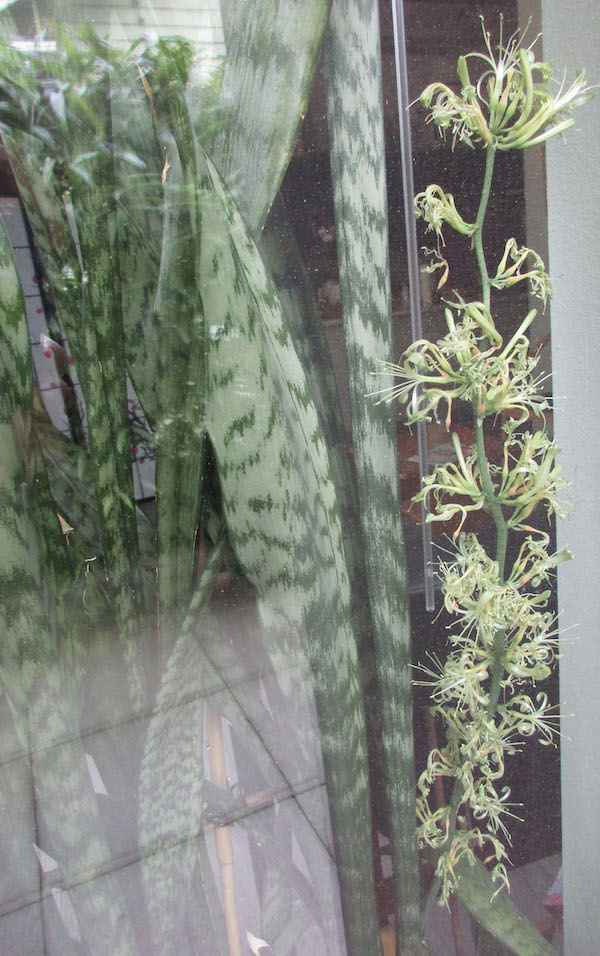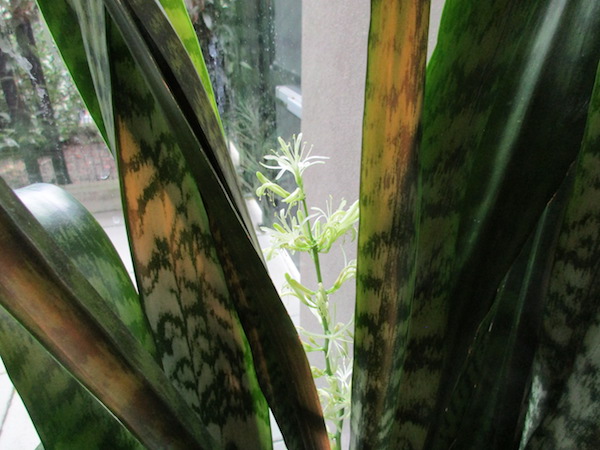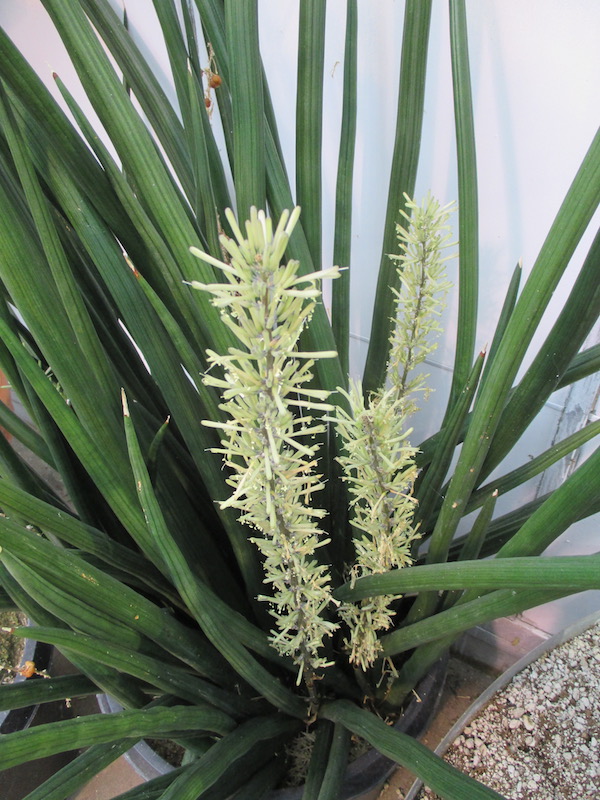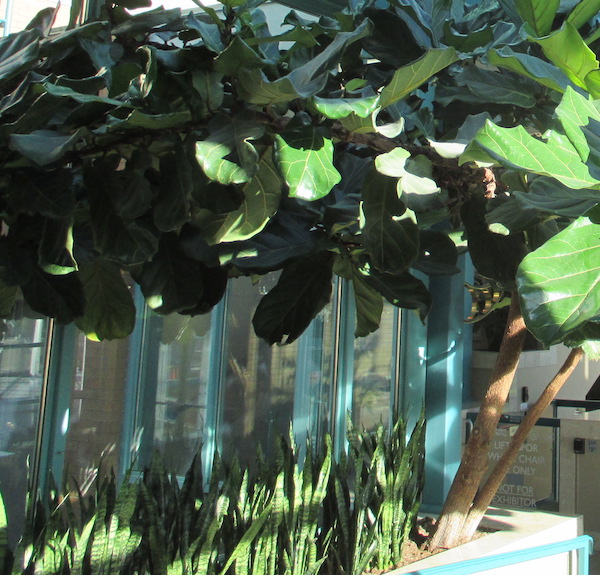Plant of the Month: May 2020
|
| Snake Plant |
| Sansevieria trifasciata Prain |
| Dracæna trifasciata (hort. ex Prain) Mabb. |
ASPARAGACEÆ; Asparagus Family (AGAVACEÆ)
|
| Whether we know them by name or not, even if we ignore them as green things in the background, most of us have seen Sansevieria (Sanseviera, Sanserieria) plants as houseplants or in interiorscape plantings. The genus is cultivated frequently indoors because some of its species and hybrids are easy plants to grow. They endure shade perfectly, and being watered scarcely. Insects and diseases seldom cause problems. Overwatering in winter is about the only way to kill a Sansevieria. They are attractive year round, and long lived. If one desires, fibers can be obtained from the leaves and used to make rope, fishing lines, cordage, fine matting, bowstring, writing paper, or clothing. |
| All that is no news to plant enthusiasts. The exciting news is that these stout swordlike plants bear skinny whitish flowers that are edible and taste sweet as they smell. Their fragrance has been likened to hyacinths or tuberoses. The plants do not bloom much, and the flowers do not last long, and drip nectar all over. The flowers are adapted for moth pollination, being: pale, night-blooming, nectar rich, fragrant, with long, slender tubes. |
| In a collection of more than one Sansevieria clone, the fertilized flowers may form attractive orange-red berries that have 1 to 3 seeds. There are reports of the berries of at least three species being eaten by people. Moreover, botanists discovered genus Sansevieria of some 60 - 70 species is --according to DNA findings published in 2014-- really just a succulent herbaceous version of the woody genus Dracæana. And Dracæna also has species from which berries are eaten sometimes. A patented hybrid was made from Sansevieria parva pollinated by Dracæna surculosa in Thailand. |
| Though superb as foliage plants for ornament, in no sense is Sansevieria worth growing as a food source. But if you happen to see a specimen in bloom, you may care to taste a flower. As ever, if pesticides were used on the plants, risk is involved in ingesting any parts. Organic pesticides are apt to be safer. |
| The 1794 generic name Sansevieria honors Raimondo di Sangro, the 7th prince of Sansevero (1710 - 1771), in the Kingdom of Naples. The commonest Sansevieria in cultivation is Sansevieria trifasciata. Its English names include Devil's Tongue, Bowstring Hemp, Mother in Law's Tongue, Snake Plant, Congo Snake Plant, Rattlesnake Plant, Zebra Plant, Crocodile's Tongue. Leaves grow 1.5 to 5+ feet high, up to 3 (4) inches wide. Dwarf cultivars are shorter. |
This species is native to Africa in dry areas, shady places, by streams, on rocky outcrops and on termite mounds in grasslands and forests of Cameroon, Central African Republic, Congo, Equatorial Guinea, Gabon, Nigeria, and Zaïre. Its plump underground stems hold water. It is notable for diverse cultivars and hybrids, varying greatly in their leaf variegation, and size. Some of the named cultivars include: Bantel's Sensation, Black Coral, Black Gold, Craigii, Futura, Gold Birdnest (Golden Hahnii), Hahnii, Hahnii Variegata, Ken's Favorite, Laurentii, Loops Pride, Moonshine, Onyx Black, Pearl Young, Silver Birdnest (Silver Hahnii), Silver Laurentii, Silver Queen, and Zeylanica.
Back |

Sansevieria trifasciata seen through a window; photo by ALJ
|

Sansevieria trifasciata flowers; photo by ALJ
|

Sansevieria flowers; photo by ALJ
|

Sansevieria trifasciata used as a groundcover under a Ficus lyrata tree; photo by ALJ
|
|
|

